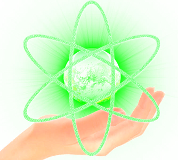F. Cardone, G. Albertini, D. Bassani, G. Cherubini, E. Guerriero, R. Mignani, M. Monti, A. Petrucci, F. Ridolfi, A. Rosada, F. Rosetto, V. Sala, E. Santoro, G. Spera
ABSTRACT
A mole of Mercury was suitably treated by ultrasound in order to generate in it the same conditions of local Lorentz invariance violation that were generated in a sonicated cylindrical bar of AISI 304 steel and that are the cause of neutron emission during the sonication. After 3 min, part of the mercury turned into a solid material which turned out to contain isotopes having a different mass (higher and lower) with respect to the isotopes already present in the initial material (mercury). These transformations in the atomic weight without gamma production above the background are brought about during Deformed Space–Time reactions. We present the results of the analyses performed on samples taken from the transformation product. The analyses have been done in two groups, the first one using five different analytical techniques: ICP-OES, XRF, ESEM-EDS, ICP-MS, INAA. In the second group of analyses, we used only two techniques: INAA and ICP-MS. The second group of analyses confirmed the occurring of the transformations in mercury.
International Journal of Modern Physics B
Vol. 31, No. 23 (2017) 1750168 (20 pages)
© World Scientific Publishing Company
DOI: 10.1142/S0217979217501685








